Hornwing Empusa: The females of these mantises refuse to eat their beau! (9 photos)
We often talk about praying mantises as bloodthirsty and ruthless hunters. And, as a rule, these insects are just that. But among every rule there is an exception. And today we will talk about one of them. Meet the Horned Empusa, one of the most peaceful praying mantises! 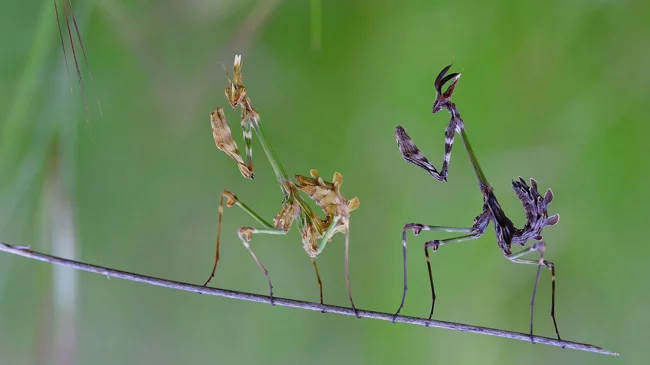
So, is this really a photo from the earth, and not an alien selfie?
These comrades are almost as widespread as ordinary praying mantises, but they are very difficult to meet, because they camouflage themselves like devils. Their graceful body is painted in a variegated yellowish-green camouflage. Growths and bulges add a couple of advantages to stealth. Thus, it is almost impossible to distinguish a predator from a blade of grass or a twig. 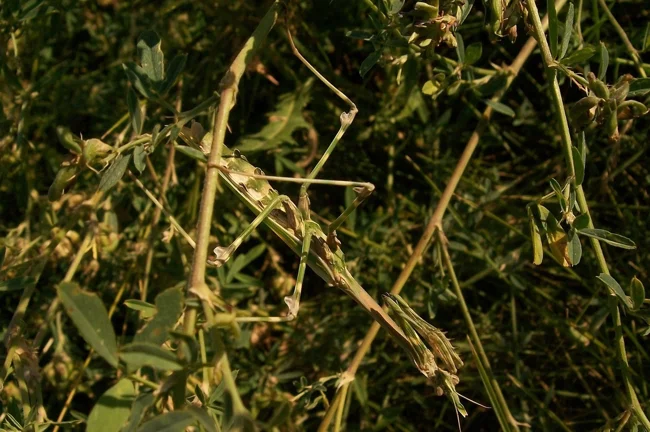
Whoever finds the praying mantis will receive a very valuable prize: a unique opportunity to enjoy its exquisite camouflage.
This alien image is complemented by a peculiar narrow crown on the head. And in addition, males grow gorgeous feathery mustaches, which is why they are also called feathery. 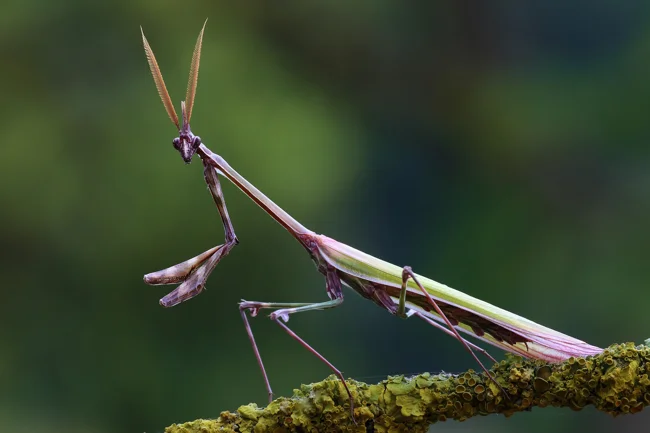
I went to the barbershop.
Their range extends from the Black Sea coast to Central Asia, covering South-Eastern Europe. Unlike ordinary praying mantises, which are normal in almost any grass, empusa prefer arid areas with steppe or semi-desert type vegetation, preferably with sand. 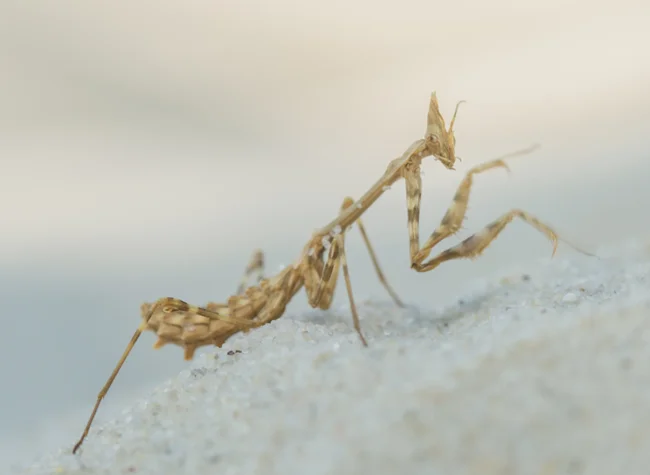
It's not just people who love to relax on the beach!
Like other praying mantises, feathery mantises hunt by ambush, lying in wait for their victims in the most inconspicuous places. They are extremely indiscriminate in food: everything that cannot offer adequate resistance, including bees and most species of wasps, gets into their stomach. And so that the prey does not resist for too long, they begin to eat it from the head. 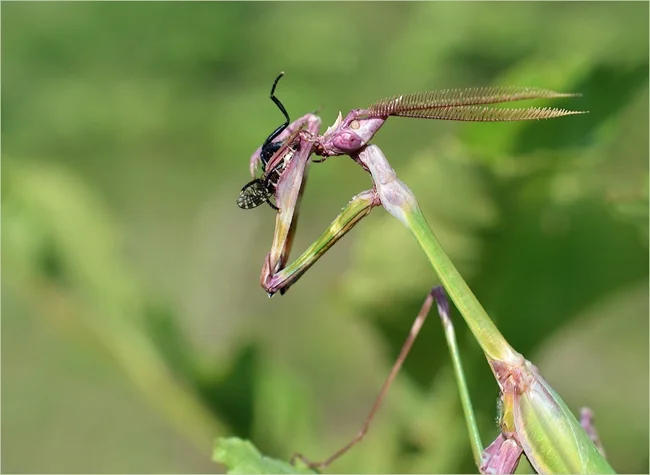
He eats the fly so deliciously that he almost wanted to eat it himself.
Yes, I know that all of the above does not sound very peaceful. But I didn’t say that praying mantises protect every insect, right? Empusas show mercy exclusively towards representatives of their own species. In the case of praying mantises, this is already a successful success. After all, most other praying mantises do not disdain cannibalism. And our mustachioed comrades engage in eating each other only in extreme cases, when, besides their relative, there is absolutely no one to eat. 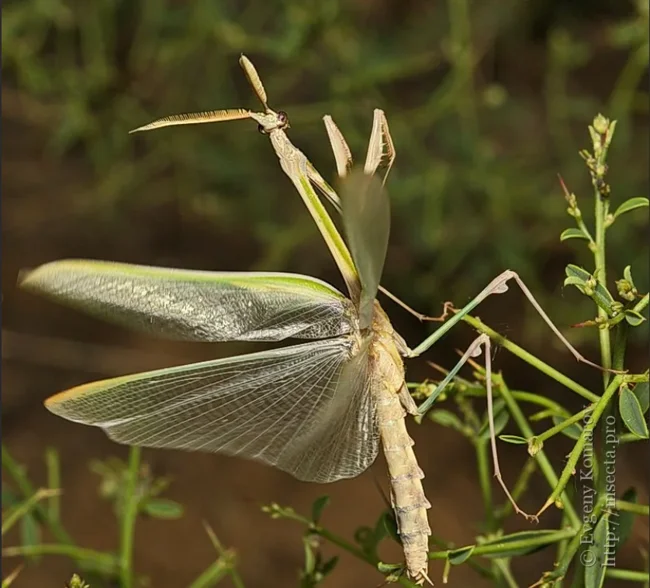
At the same time, the empusa looks as menacing as any other praying mantis.
Even in matters of love, insects are extremely gallant towards each other. Competing for a female, males try to resolve the issue peacefully. Such a duel looks extremely funny: the boys puff up at each other, waving their wings and paws. 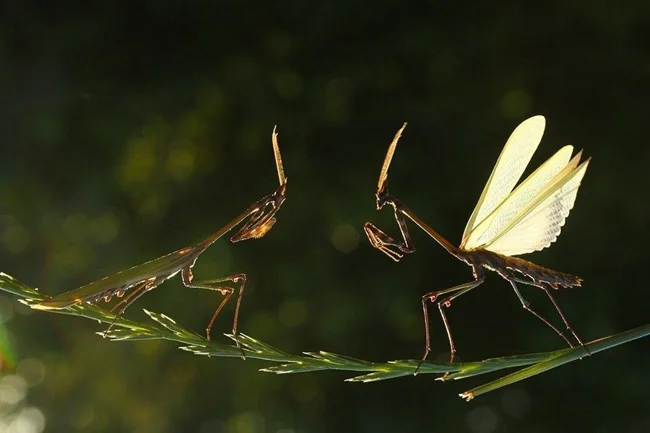
- Sir, please leave here, this is my lady! - I have to disagree with you, sir, this lady belongs to me, period!
In the same way, by waving their wings, paws and whiskers, they seduce females. During mating, partners are very careful towards each other. The females of this species are so supportive that they refuse the classic mantis dish - their man! 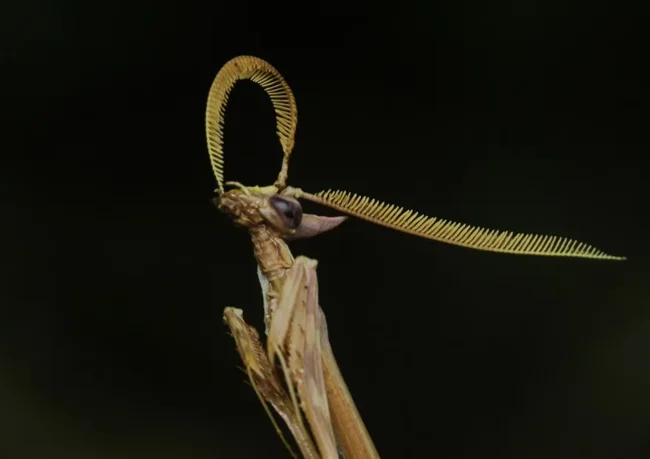
Preening before a date.
Females lay eggs in the form of thick oothecae on grass stems and other suitable places in mid-summer. And here another important difference between empusas and ordinary praying mantises appears: their larvae hatch not the next spring, but at the end of the same summer. 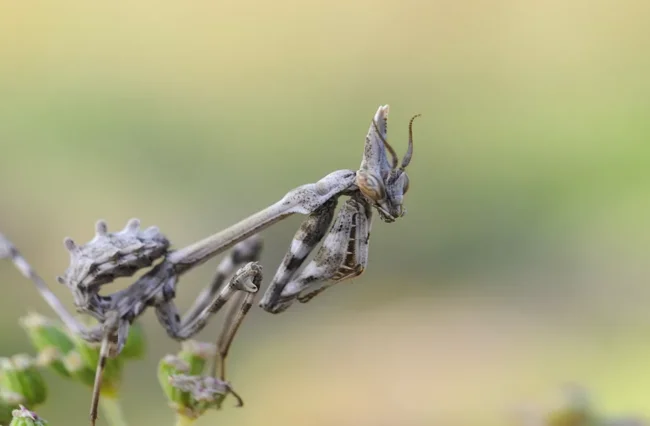
I am a little shriveled leaf. Don't mind me.
The babies that are born eat every little thing. By autumn they have grown considerably and are preparing for hibernation. They overwinter in the same place where they live - on the stems of leaves, pretending to be a dried blade of grass. Winters in their habitat are quite mild, so insects can easily survive it. And mantises become fully adult by the beginning of summer. That is, right now!
